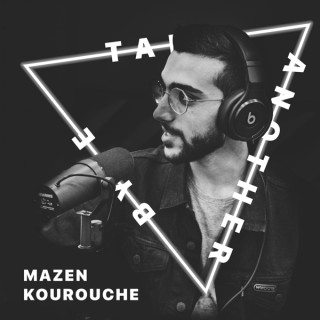Podcast appearances and mentions of amit kalra
- 9PODCASTS
- 9EPISODES
- 27mAVG DURATION
- ?INFREQUENT EPISODES
- Jul 1, 2023LATEST
POPULARITY
Latest podcast episodes about amit kalra
2377. 141 Academic Words Reference from "Amit Kalra: 3 creative ways to fix fashion's waste problem | TED Talk"
This podcast is a commentary and does not contain any copyrighted material of the reference source. We strongly recommend accessing/buying the reference source at the same time. ■Reference Source https://www.ted.com/talks/amit_kalra_3_creative_ways_to_fix_fashion_s_waste_problem ■Post on this topic (You can get FREE learning materials!) https://englist.me/141-academic-words-reference-from-amit-kalra-3-creative-ways-to-fix-fashions-waste-problem-ted-talk/ ■Youtube Video https://youtu.be/qBZvhhtC6dg (All Words) https://youtu.be/ZA71mCWXfzA (Advanced Words) https://youtu.be/z4TWyG2g9_s (Quick Look) ■Top Page for Further Materials https://englist.me/ ■SNS (Please follow!)
Video version: https://www.youtube.com/watch?v=wNxKcNVENi4&t=7sBilly - Solutions for today's contractorsAmit: https://www.linkedin.com/in/amit-kalra-cpcu-mba-04846617/Billy: https://billyforinsurance.com/
Really enjoyed being able to sit down with three fellow developers, Amit Kalra, Harish Yerra & James Dale, in Apple's Podcasting Studio at WWDC, and discuss the rise of technology in the world of developers. Theres a lot in here on WWDC 2018, what's new in augmented reality and our thoughts on learning to code - I'm sure you'll get a lot of value out of this.
3 creative ways to fix fashion's waste problem | Amit Kalra
What happens to the clothes we don't buy? You might think that last season's coats, trousers and turtlenecks end up being put to use, but most of it (nearly 13 million tons each year in the United States alone) ends up in landfills. Fashion has a waste problem, and Amit Kalra wants to fix it. He shares some creative ways the industry can evolve to be more conscientious about the environment -- and gain a competitive advantage at the same time. Hosted on Acast. See acast.com/privacy for more information.
What happens to the clothes we don't buy? You might think that last season's coats, trousers and turtlenecks end up being put to use, but most of it (nearly 13 million tons each year in the United States alone) ends up in landfills. Fashion has a waste problem, and Amit Kalra wants to fix it. He shares some creative ways the industry can evolve to be more conscientious about the environment -- and gain a competitive advantage at the same time.
우리가 구매하는 의류에 무슨 일이 생기는 걸까요? 마지막 시즌의 코트, 바지, 터틀넥이 어떻게 처분되는지를 생각할 수 있겠지만, 대부분은(미국에서만 매년 1,300만 톤) 매립됩니다. 패션은 폐기문제를 가지고 있고, 아밋 칼라는 고치고 싶어합니다. 그는 산업이 환경에 좀 더 관심 가지고 진화하면서 경쟁우위를 얻을 수 있는 창의적인 방법을 공유합니다.
Três formas de corrigir o problema do desperdício na indústria da moda | Amit Kalra
O que acontece com as roupas que não compramos? Você pode achar que casacos, calças e blusas de gola alta da última temporada acabam sendo doados, mas a maioria (quase 13 milhões de toneladas por ano só nos Estados Unidos) acaba em aterros sanitários. A moda tem um problema de desperdício e Amit Kalra quer corrigi-lo. Ele compartilha formas criativas com as quais a indústria pode evoluir para ser mais consciente sobre o meio ambiente e, ao mesmo tempo, obter vantagem competitiva.
3 façons originales de résoudre le problème des déchets de la mode | Amit Kalra
Qu'arrive-t-il aux vêtements que nous n'achetons pas? Vous pourriez penser que les manteaux, les pantalons et les cols roulés de la saison dernière finissent par être utilisés, mais la plus grande partie (près de 13 millions de tonnes chaque année aux États-Unis seulement) finit dans les sites d'enfouissement. La mode a un problème de gaspillage, et Amit Kalra veut le résoudre. Il propose des idées originales pour faire évoluer l'industrie textile et la rendre plus respectueuse de l'environnement - tout en lui donnant un avantage concurrentiel.
Tres maneras de solucionar el problema de los residuos textiles | Amit Kalra
¿Qué destino tiene la ropa que no compramos? Podría pensarse que los abrigos, los pantalones y los jerseys con cuello de tortuga terminan recibiendo algún uso, pero la mayoría (casi 13 millones de toneladas por año en los Estados Unidos) son arrojados a la basura. La industria de la moda genera residuos, y Amit Kalra quiere encontrar la solución. En esta charla, comparte algunas formas creativas en que la industria puede ir tomando mayor conciencia sobre el medio ambiente, y ganar ventaja competitiva al mismo tiempo.












